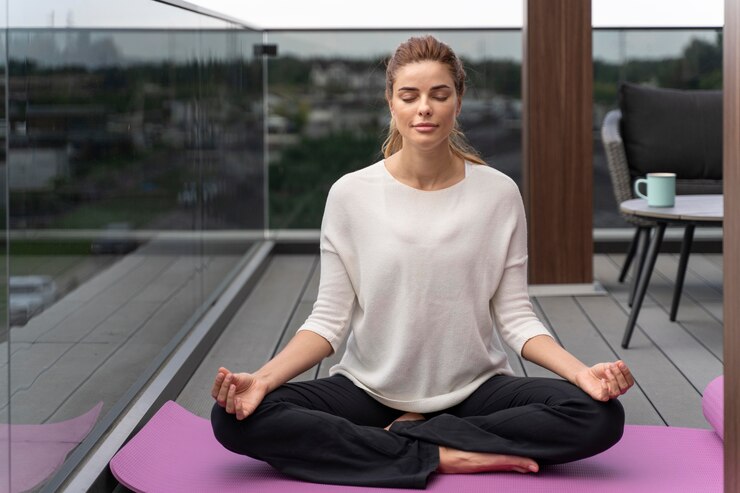Breathing is something automatic, yet few of us ever tap into its potential. In yoga, breathwork – or Pranayama – is a core practice that’s been developed over thousands of years. The ancient yogis discovered that the breath is not just a physiological process; it’s a gateway to energy, mental clarity, and emotional equanimity. Now, contemporary science has started corroborating these ancient beliefs, revealing the immense body-mind influence of breath control. Yet, how does breathwork affect us, how does it help us, and what should we remember before practicing? Let’s explore.
A Brief History
The yogic control of breath has its origin in ancient India many thousands of years ago as part of spiritual and physical health. Pranayama comes from Sanskrit words prana, meaning life force or vital energy, and yama, extension or control. The control of breath was experienced by the ancient yogis as a means by which the mind, emotions, and health could be influenced.
Pranayama is a limb of yoga, as outlined in the Yoga Sutras of Patanjali. It was practiced for the purification of the body and mind for meditation, spiritual insight, and longevity. Works like the Hatha Yoga Pradipika outline numerous techniques of breathing that are intended to purify the body, balance the energies, and awaken states of higher consciousness. While these instructions were largely experiential in nature, contemporary research now offers scientific rationale for much of this benefit.
How Contemporary Science Explains The Benefits
Neuroscience, physiological, and psychological advances have dispelled the mystery of why and how breath control affects our health. According to studies, breathwork influences several of the body’s systems, notably the nervous system, cardiovascular system, and cognition.
1. Nervous System Regulation
Breathwork has a direct influence on the autonomic nervous system (ANS), which regulates involuntary bodily functions like heart rate, digestion, and stress responses. As we slow down and breathe deeply, we activate the parasympathetic nervous system, or the “rest and digest” response. This lowers stress hormones like cortisol, blood pressure, and leads to relaxation. In contrast, rapid breathing techniques can stimulate the sympathetic nervous system, increasing alertness and energy as required.
2. Improved Oxygenation and Lung Function
Controlled, slow breathing enhances oxygen exchange, which makes the lungs more efficient and increases their capacity. Studies show that diaphragmatic breathing, for instance, reinforces respiratory function in individuals with diseases like asthma or chronic obstructive pulmonary disease (COPD). As we engage the diaphragm, we reduce shallow chest breathing, which naturally occurs with stress and anxiety.
3. Heightened Cognitive Function and Emotional Regulation
Breathwork has also been demonstrated to affect brain function, specifically in regions linked to emotional control and concentration. Functional MRI scans reveal that slow breathing activates the prefrontal cortex, enhancing concentration and decision-making ability. Some breathing practices also decrease activity in the amygdala, the brain’s fear centre, which decreases anxiety and emotional reactivity.
4. Heart Health and Blood Pressure Regulation
Slow, rhythmic breathing can help regularize heart rate variability (HRV), a key marker of cardiovascular health. Higher HRV is associated with resilience to stress and overall heart health. Studies have found that Pranayama practices, and in particular coherent breathing (six breaths per minute), help in decreasing blood pressure and circulation.
5. Immune System Support and Detoxification
Breath also affects the lymphatic system, which is responsible for detoxification and immunity. Deep breathing aids in the flow of lymph fluid, which assists in the elimination of waste from the body and resisting infection. The heightened oxygenation through breath also assists in cellular function and tissue repair.
The Positive Effects
Synergy with a yoga practice can enhance the effects of a breathwork practice, affecting body and mind equally. Some of the most noticeable benefits include:
Stress Reduction – Techniques:
Nadi Shodhana (alternate nostril breathing)
Bhramari (humming bee breathing)
These activate the parasympathetic nervous system, reducing stress and promoting relaxation.
Improved Sleep – Slow, deep breathing before bed can calm the mind and promote relaxing sleep by reducing the production of stress hormones.
Emotional Stability – Breathing promotes improved emotional balance, enabling easier management of anxiety, frustration, and overwhelm.
Enhanced Physical Performance – Optimised breathing aids stamina, endurance, and recovery, and is beneficial to both yogis and athletes.
Enhanced Mindfulness – Awareness of the breath promotes presence, and makes life in general and yoga practice specifically more intentional and focused.
Risks and Considerations
Breathwork is safe for the majority of people, but there are a few considerations to bear in mind and even seek the advice of a medical practitioner before starting, such as:
Medical Conditions – Individuals suffering from respiratory diseases, heart conditions, or high blood pressure need to consult a physician before practicing strong techniques like Kapalabhati (skull-shining breath).
Dizziness or Lightheadedness – Some techniques of breathing can cause temporary dizziness. So, start slowly and practice in a sitting or lying-down position if necessary.
Pregnancy – Pregnant women need to avoid retention of breath and dynamic techniques and instead use gentle diaphragmatic breathing.
Emotional Releases – The deep breathing may at times stir up suppressed emotions. If you are overcome with emotion, resume normal breathing and consult guidance if necessary. Having some private yoga lessons can really help to learn under the skilled guidance of a teacher.
Breath for Life
Breathwork is a potent convergence of ancient wisdom and modern science. What yogis have understood for thousands of years is now supported by research: how we breathe influences everything in our health, from stress levels to cognitive function and beyond.
So next time you roll out a mat in your yoga lessons, pause for a moment, breathe in deeply and breathe out slowly. Your breath is not merely a function— it is a tool for health, balance and strength.
Read more blogs on Todaybloggingworld.com
